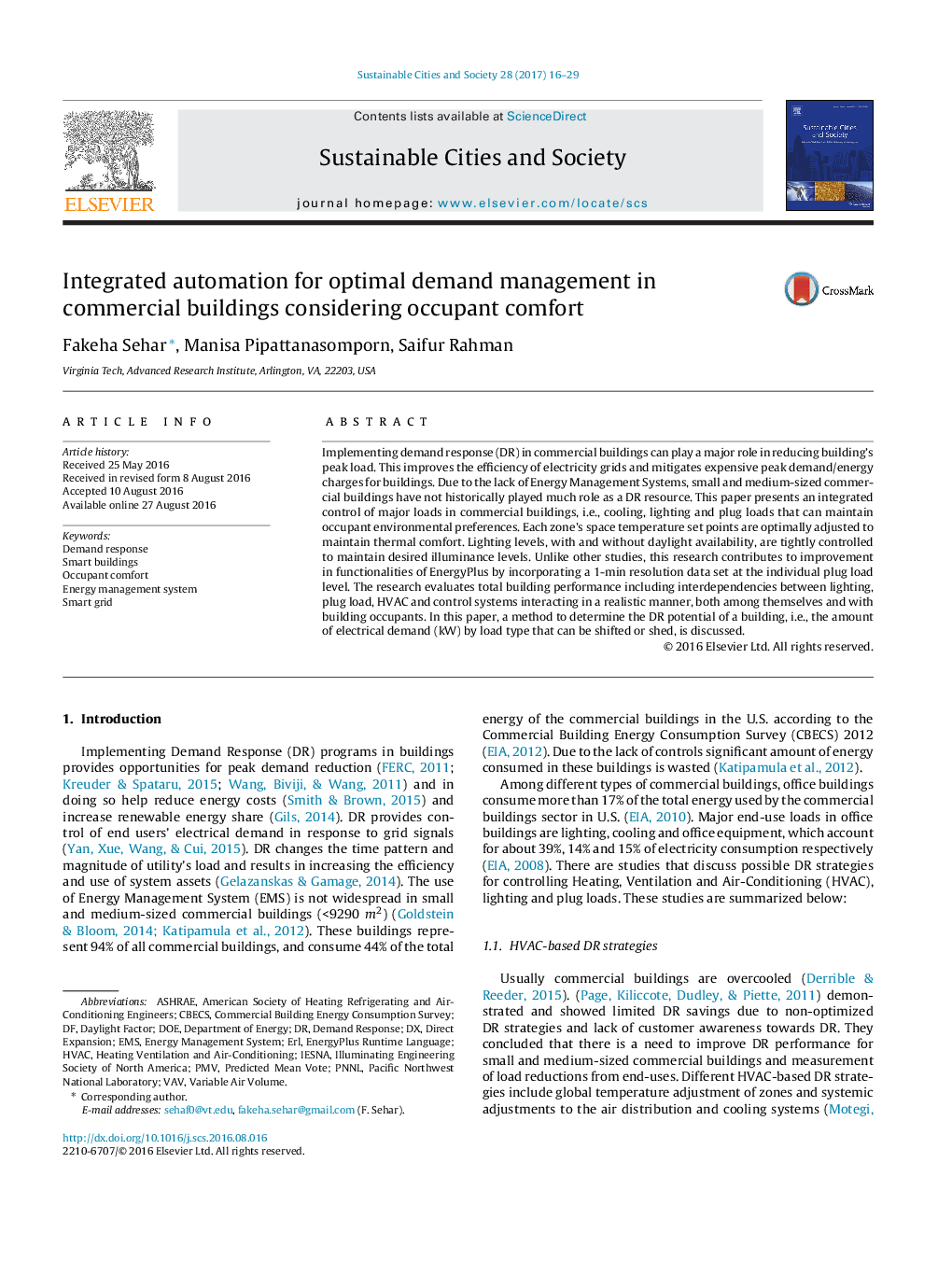| Article ID | Journal | Published Year | Pages | File Type |
|---|---|---|---|---|
| 4928213 | Sustainable Cities and Society | 2017 | 14 Pages |
Abstract
Implementing demand response (DR) in commercial buildings can play a major role in reducing building's peak load. This improves the efficiency of electricity grids and mitigates expensive peak demand/energy charges for buildings. Due to the lack of Energy Management Systems, small and medium-sized commercial buildings have not historically played much role as a DR resource. This paper presents an integrated control of major loads in commercial buildings, i.e., cooling, lighting and plug loads that can maintain occupant environmental preferences. Each zone's space temperature set points are optimally adjusted to maintain thermal comfort. Lighting levels, with and without daylight availability, are tightly controlled to maintain desired illuminance levels. Unlike other studies, this research contributes to improvement in functionalities of EnergyPlus by incorporating a 1-min resolution data set at the individual plug load level. The research evaluates total building performance including interdependencies between lighting, plug load, HVAC and control systems interacting in a realistic manner, both among themselves and with building occupants. In this paper, a method to determine the DR potential of a building, i.e., the amount of electrical demand (kW) by load type that can be shifted or shed, is discussed.
Keywords
Related Topics
Physical Sciences and Engineering
Energy
Renewable Energy, Sustainability and the Environment
Authors
Fakeha Sehar, Manisa Pipattanasomporn, Saifur Rahman,
